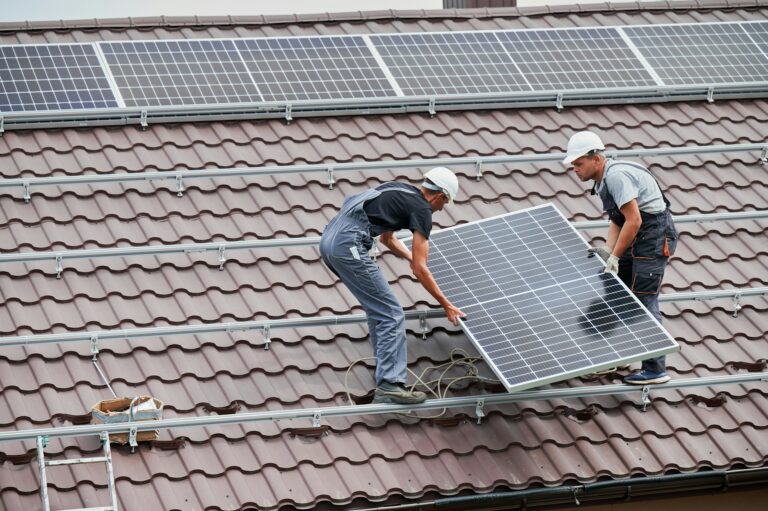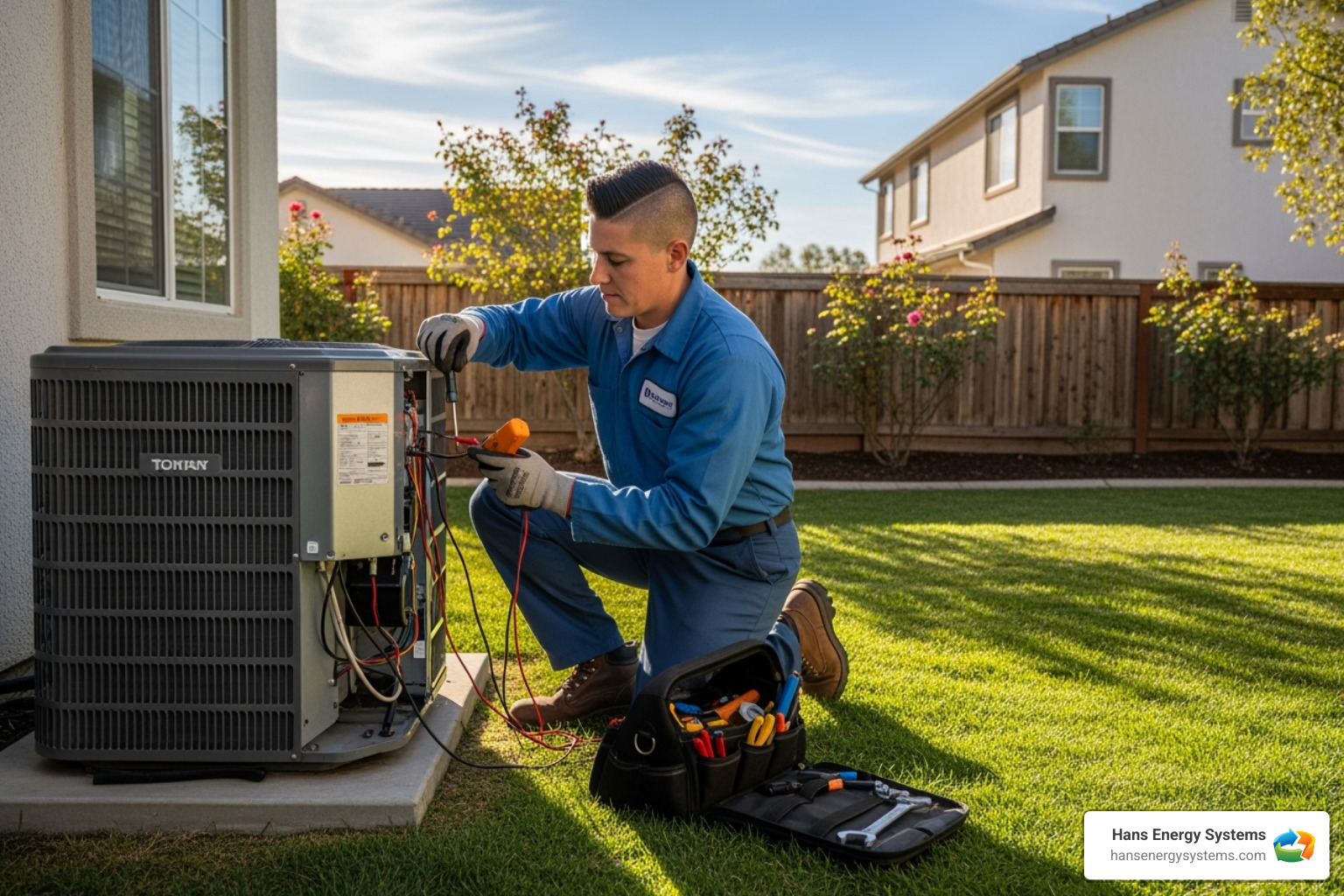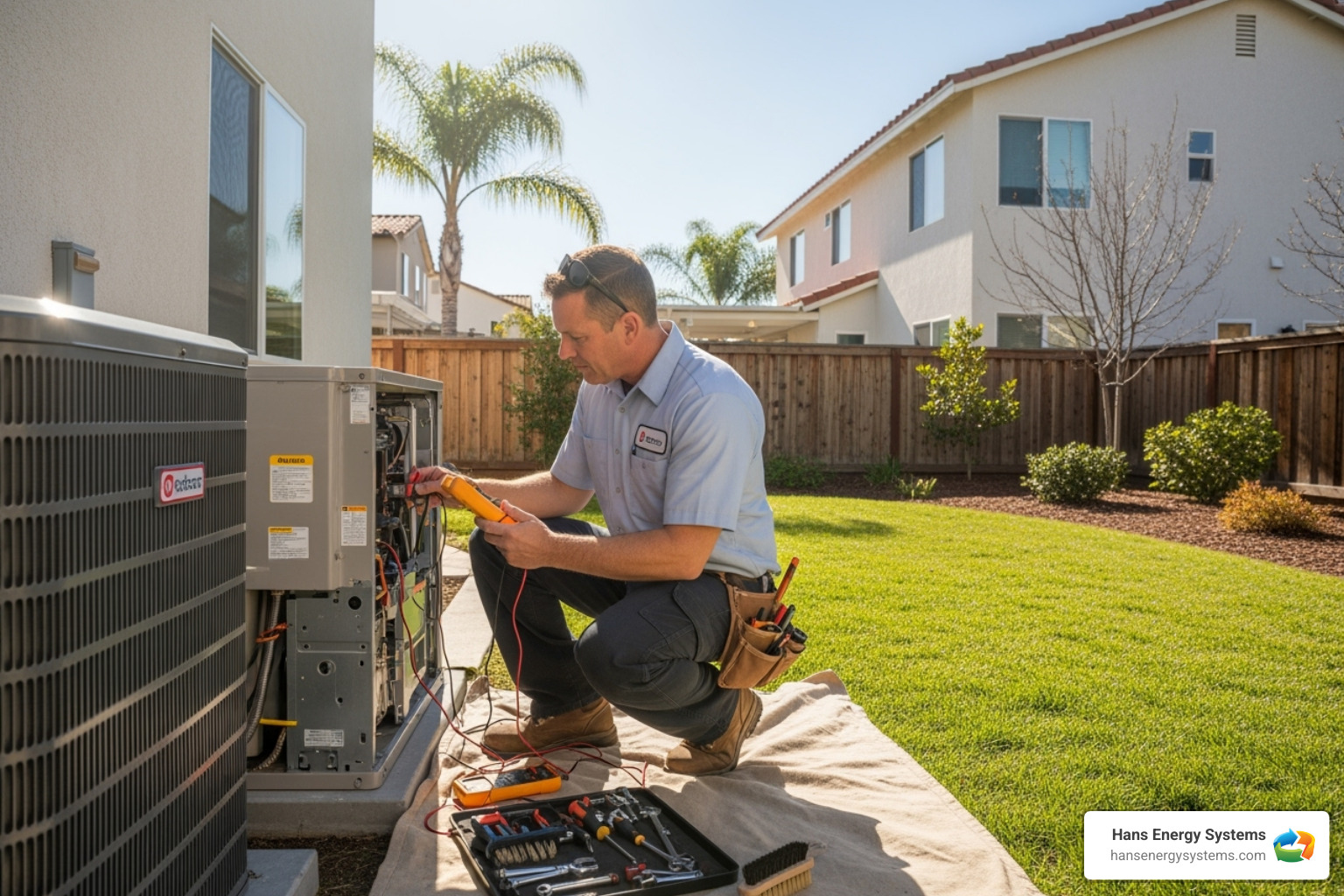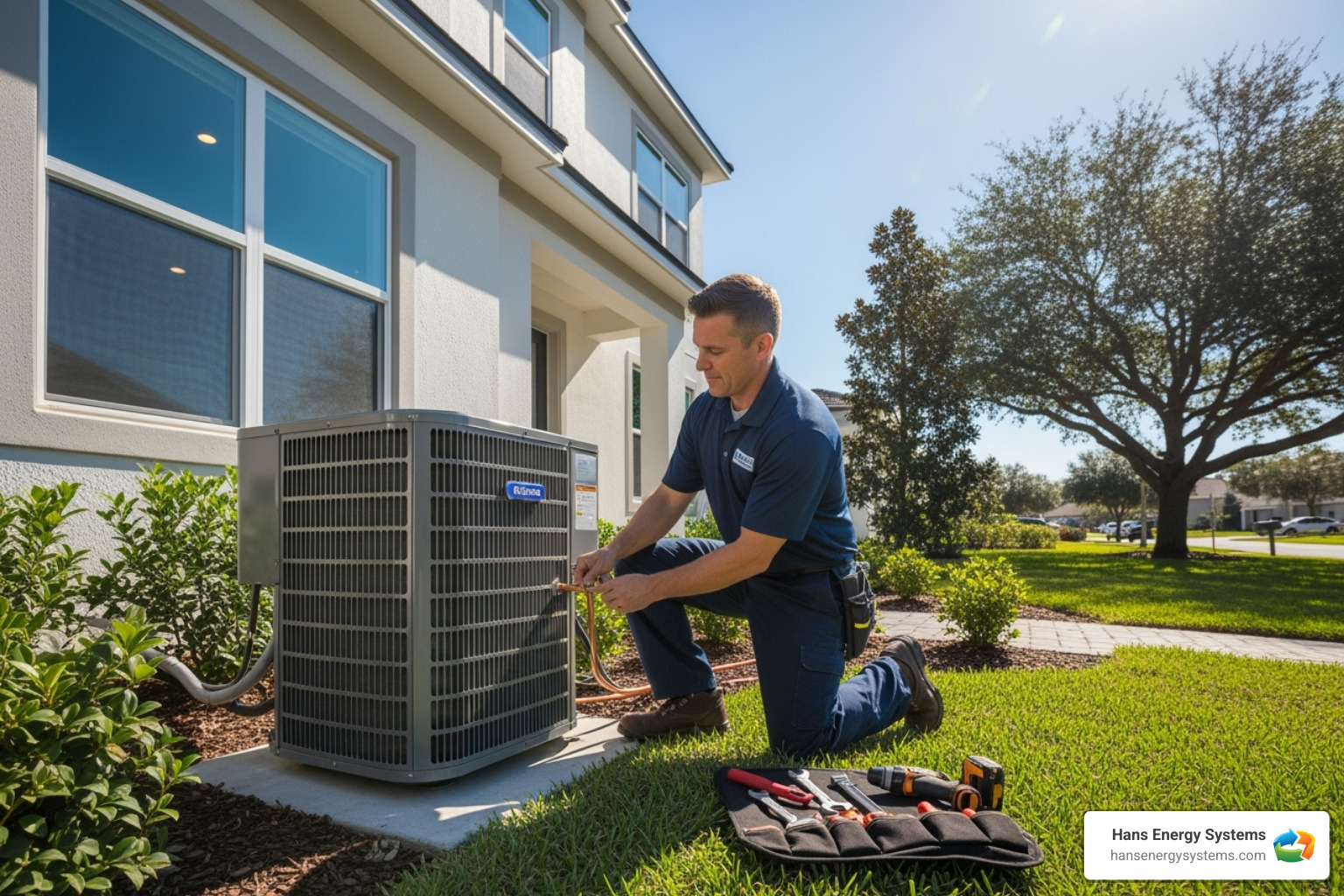Installing solar panels is one of the most effective ways to reduce electricity bills and make better use of natural sunlight in Poway. But without the right placement, the system can fall short of expected performance. Even with high-quality panels, the location, direction, and angle will determine how much sunlight they capture each day, and that means the difference between saving consistently or dealing with frustrating shortfalls.
Many homeowners in Poway are surprised to learn that factors like roof angle, shade from nearby buildings, or even seasonal shifts in sun positioning affect how well their system works. Getting the placement right upfront means fewer performance issues, better energy output, and longer system life. Whether you’re thinking about installing or adjusting your current setup, understanding where to place your panels is the key to maximizing their value.
Assessing Your Roof
Before anyone can install solar panels, the roof needs a close look. Not all homes in Poway have the same roof type or structure, and that matters when planning a smooth installation that produces results. A good fit does not just mean enough space—it includes how the roof faces, its slope, and whether it can safely support the system over time.
Start with orientation. A south-facing roof is typically best in Poway because it receives steady sunlight throughout the year. If the roof faces east or west, it may still work fine, but it might need more panels to produce the same output. North-facing roofs tend to be less effective unless angled sections receive morning or afternoon light.
Now consider the slope and layout:
1. Flat roofs can work well but usually require tilt racks to angle the panels properly.
2. Sloped roofs with a 15–45 degree pitch tend to produce efficient results with fewer hardware adjustments.
3. Roofs with multiple faces, sections, or gables may need a split-panel layout and careful matching across surfaces.
Also, think about how much space is usable. Solar panels need clear, unobstructed space without vents or skylights in the way. Homes with large HVAC units or limited ridgeline areas might require creative customization to fit everything without blocking airflow or causing panel overlap.
Weight load is another point. Even though solar panels are not extremely heavy, the combined total across a 10- or 20-panel array adds up. Before installation, it is often smart to have a structural evaluation done to make sure the roof is in good shape and will not need reinforcement.
Finally, factor in materials. Tile roofing can require more time to install without damage, while shingle and metal roofs often support simpler mounting solutions. Matching the method to the roofing style helps prevent loosening hardware or surface issues over time.
Poway homeowners with older roofs may want to handle any needed repairs before installation. Replacing panels later just to fix worn-out shingles means added cost and downtime. A home with good roof condition not only supports the system but often sees fewer long-term issues after installation.
Optimal Angles and Directions
Sunlight in Poway varies across the year, but there are some general rules that help panels capture the highest amount of solar energy no matter the season. Getting the angle and direction right has a big impact on how much electricity your system produces, especially during high-use summer months when AC units and appliances run often.
The best general orientation for fixed solar panels in Poway is due south. This direction gives the most exposure throughout the day, especially during midday hours when the sun is strongest. If south-facing placement is not possible, southwest and southeast can still offer strong production, though total energy output may dip slightly.
As for tilt, the angle of your roof may already align closely with what is recommended. For Poway’s location, a tilt angle between 25 and 30 degrees is close to optimal. This has the right balance to capture high sunlight in the summer without overexposing the panels or missing out during lower winter sun angles.
Some adjustments to angles and layout might be needed based on:
1. Roof type (flat roofs often require mounted racks set to a fixed tilt)
2. Sun path visibility
3. Roof features like dormers, chimneys, or gables
Panels mounted at sharper upward angles may underperform in the summer but gather more light in winter. The opposite is true when panels are laid flatter—they do great in summer but lose efficiency during cooler months. For homeowners using battery backups or who rely on solar year-round, this matters.
Selecting the right direction and angle with seasonal shifts in mind improves daily and yearly output. For example, a Poway homeowner with a flat garage rooftop was unsure about which direction to mount their panels. By analyzing sun exposure through solar tracking tools and adjusting installation by just a few degrees, they gained several extra usable hours each day during late summer and early fall.
Small adjustments to direction or tilt can lead to better efficiency, more consistent energy production, and less draw from the grid when temperatures rise.
Avoiding Shading Issues
Even if your panels are placed at the perfect angle and direction, shading can limit how much energy your system produces. Many Poway homes have trees, roof features, nearby buildings, or fences that affect sunlight at different times of day. Shade can block entire panels or parts of them, and the impact adds up when the system cannot pull in its full capacity.
Start by identifying which areas on your roof get uninterrupted sunlight most of the day. Take special note of height differences nearby—second-story roofs, chimneys, or backyard trees. Morning and late afternoon sun can be interrupted by objects that do not seem large at first glance. Even seasonal growth, like trees thickening in summer, can increase shading during peak energy months.
To reduce problems caused by shading, homeowners in Poway can:
1. Trim overhanging branches or remove dead trees that may block midday sun.
2. Position panels on roof sections that have the longest direct exposure.
3. Avoid placing panels behind chimneys, air vents, or satellite dishes that may cast shadows.
4. Use monitoring tools to track how shade moves across the roof throughout the year.
When shading cannot be fully removed, certain tools can help. Microinverters and panel optimizers are smart additions for shaded zones. Unlike older systems where one shaded panel lowered performance for the entire row, newer designs isolate output panel by panel. That way, one shaded spot does not drag the whole system down.
For example, a homeowner in Poway had steady shade cast by a neighbor’s tall sidewall during the late afternoon. Shifting some panels to a western roof surface and adding optimizers helped recover output during peak AC usage times. Solutions like this also reduce the need to oversize the system just to work around shading.
Addressing shade ahead of installation means higher energy production and better system return over time. Even partial adjustments can make a noticeable difference in overall performance.
Professional Installation Ensures Performance
Choosing professional installation goes beyond just mounting panels correctly. It protects your investment from avoidable issues tied to improper placement, safety hazards, and local compliance problems. Poway homeowners trusting experienced installers see better long-term system performance and fewer technical problems, especially when working with homes that present layout challenges.
Our professionals understand the permitting and inspection process in Poway and bring accurate planning to jobs that involve sloped and multi-surface roofs. They account for sun exposure, equipment weight, inverter placement, and required clearances. A lot of installation problems start when panels are rushed onto a roof with little thought about the structural or electrical systems underneath.
Here is what homeowners can expect with professional support:
1. Detailed sun-tracking reports before installation
2. Structural review to confirm roof strength
3. Placement strategies that reduce future shading risks
4. Proper wiring that meets local codes
5. Mounting systems designed to preserve roof condition
Solar installations must also follow electrical and fire codes, which can differ slightly depending on the area. Our technicians handle all of that upfront so your system passes every inspection without delays. Homeowners typically do not get this level of oversight with less experienced crews or self-installations.
Over time, having panels placed carefully by professionals also prevents things like loose racking, section shifting due to wind, water pooling, or expansion gaps that cause problems during temperature swings. These types of issues often go unnoticed until they affect energy output or require repairs.
Getting the installation right from the start preserves performance and gives you future flexibility if you are adding panels, switching to battery backup, or replacing parts. Investing in qualified help prevents surprises and supports a system that performs well over time.
Enhance Your Solar Investment in Poway
Strategic placement of your solar panels is one of the most important ways to improve energy performance year-round in Poway. Roof orientation, tilt angle, sun exposure, and installation methods all contribute to whether your system runs smoothly or faces issues during peak demand.
Homeowners who plan around sun exposure and avoid problems like shading and misaligned panel direction often see stronger solar results. These steps protect both your long-term electric savings and the physical condition of your equipment and roof.
Whether you are installing panels for the first time or fixing an underperforming system, knowing how and where to place them makes a marked difference. Solid installation and thoughtful layout lead to consistent energy output, fewer problems, and a longer-lasting return on your solar investment.
If you’re ready to improve energy performance while addressing common placement issues, learn more about solar panel installation in Poway and work with Hans Energy Systems to find the right solution for your home. Our professionals can help assess your roof, adjust panel angles, and minimize shading risks so you enjoy stable output and fewer maintenance concerns. For a quick estimate or to book a service visit, please contact us today.





